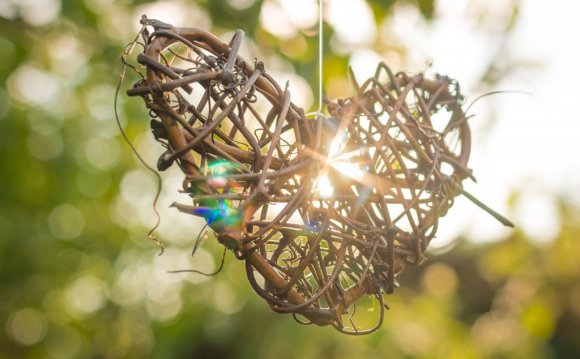
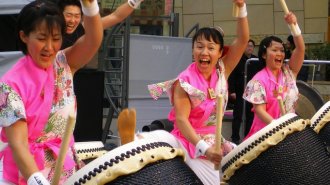 It's party time! YEEEEEEEEEE-HAW
It's party time! YEEEEEEEEEE-HAW
Everybody loves the holidays, right? But what exactly are, "the holidays"? While here in the States, we have our own specific ideas of what constitutes them - usually Christmas, Hannukkah, Kwanzaa, and maybe Thanksgiving if we're getting impatient - the rest of the world has their own ideas. And you know what? Their ideas are awesome.
We're going on holiday here at Go Overseas, and we're taking you with us! Grab your noise makers, your costumes, and your favorite moon cakes (say what?), as we take a trip around the globe to find the Best Holiday Celebrations Around the World.
DIWALI - INDIA
Shubh Diwali, Deepavali vaalthukkal, Saal Mubarak, Happy Diwali!
Diwali, the Hindu festival of lights, occurs in the middle of autumn during the darkest new moon of Kartik, the Hindu month. I like what Diwali is all about. It's a festival celebrating the victory of good over evil, light over darkness, and hope over despair. And it uses light, family, food and fireworks to show that yeah, things are pretty darn good here on Earth, after all.
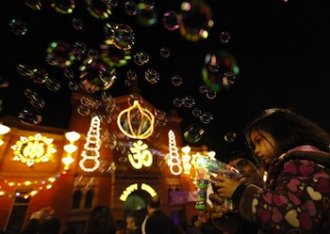 Diwali is nothing else, if not happy. It is one big casting-off of the chains and shackles that bind us to malaise and sadness, a slap across the face to humbuggery, and a collective scream that we as human beings flatly refuse to be defeated, unhappy, or unloved. Friends and relatives shower each other in gifts and tokens of love, strangers sing and dance and pray arm-in-arm, and brightly colored flowers and fireworks spice up the world like pixie dust.
Diwali is nothing else, if not happy. It is one big casting-off of the chains and shackles that bind us to malaise and sadness, a slap across the face to humbuggery, and a collective scream that we as human beings flatly refuse to be defeated, unhappy, or unloved. Friends and relatives shower each other in gifts and tokens of love, strangers sing and dance and pray arm-in-arm, and brightly colored flowers and fireworks spice up the world like pixie dust.
While Diwali is celebrated by Hindus all over the world, India is really the place to experience this festival at its epicenter. Large cities like Mumbai are practically overrun and shutdown by the celebration, with most shops closed so owners can clean their homes and prepare. Large retail stores will be open leading up to the festival for shopping opportunities, but by nighttime expect business to be closed, the rivers lined with candles, and the city ablaze in the fervor of the human spirit exulting.
CARNIVAL - BRAZIL
Bom Carnaval, Happy Carnival!
There ain't no party like a Carnival party cause a Carnival party don't stop. Carnival, or the Catholic celebration that takes place the week before the start of the somber season of Lent, is the undisputed heavyweight champion of the Party World. Imagine Mardi Gras in New Orleans (the two actually celebrate the same occasion) on steroids, and stretched out for five days.
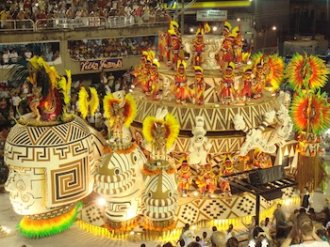 Carnival, like Diwali, is another celebration of the goodness of life and the passion of the human spirit. In anticipation of the forty days and forty nights of Lent, during which the faithful pray, somberly reflect, and usually sacrifice or abstain from partaking in certain beloved pleasures, those same worldly pleasures are given one last joyous hurrah!
Carnival, like Diwali, is another celebration of the goodness of life and the passion of the human spirit. In anticipation of the forty days and forty nights of Lent, during which the faithful pray, somberly reflect, and usually sacrifice or abstain from partaking in certain beloved pleasures, those same worldly pleasures are given one last joyous hurrah!
Before such a period, the masses celebrate with a week of loud music, jubilant dancing, flamboyant costumes, and a celebration of the carnal delights - hence, Carnival.
Local Samba Schools - nearby rivals that construct elaborate floats and choreographed dances, parade through the streets as throngs of citizens line the route, singing, dancing, drinking, cheering, and generally having the time of their lives. I was in Rio de Janeiro during Carnival several years ago, and my friend and I joked that whenever we grew tired from doing something, they were sapping our strength to power Carnival. How else could such a party go on for so long?
CHRISTMAS - GERMANY
Fröhliche Weihnachten!, Merry Christmas!
O Tannenbaum, o Tannenbaum, wie true sind deine Blätter! I mean, duh, right? Christmas is perhaps the most beloved of the Western holidays, celebrating the birth of Jesus Christ in Bethlehem. And when you think of Israel and Three Kings from the Orient, what do you think of? Germany, of course!
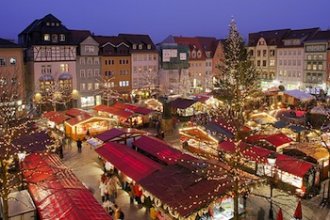 Okay, maybe not. But many of the Christmas traditions we hold most dear, not the lore, come from Germany. The tannenbaum, for instance, is our modern Christmas tree. The tradition of chopping down a wild fir tree to drag inside, hang shiny things from and stand in your corner (sounds weird now, doesn't it?) originated in Deutschland in the Middle Ages. Garland, candles, lights, wreaths, and door-to-door carolers? Also German traditions, all of them! I think that what appeals to us about the observation of the Christmas holiday is the nostalgia, and the harkening back to simpler, older, perhaps purer times, whether imagined or real. Celebrating Christmas in Germany is the pinnacle of this nostalgia, where bundled-up Europeans sip hot drinks, sing joyful songs in foreign tongues, and picturesque little cottages with twists of chimney smoke dot the square.
Okay, maybe not. But many of the Christmas traditions we hold most dear, not the lore, come from Germany. The tannenbaum, for instance, is our modern Christmas tree. The tradition of chopping down a wild fir tree to drag inside, hang shiny things from and stand in your corner (sounds weird now, doesn't it?) originated in Deutschland in the Middle Ages. Garland, candles, lights, wreaths, and door-to-door carolers? Also German traditions, all of them! I think that what appeals to us about the observation of the Christmas holiday is the nostalgia, and the harkening back to simpler, older, perhaps purer times, whether imagined or real. Celebrating Christmas in Germany is the pinnacle of this nostalgia, where bundled-up Europeans sip hot drinks, sing joyful songs in foreign tongues, and picturesque little cottages with twists of chimney smoke dot the square.
And speaking of that square, Germany is famous for its Christmas markets. These quaint, charming public markets pop up in German city squares leading up to Christmas. Local merchants sell homemade pastries and confections, hot ciders and brews, handmade original decorations and figurines, and yes - even gifts for the loved ones on your list. They are a perfect manifestation of the Christmas spirit, and if you want to soak it up, Germany is the place for you.
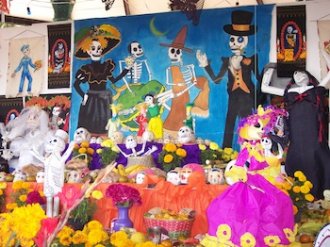 DIÁ DE MUERTOS - MEXICO
DIÁ DE MUERTOS - MEXICO
No traditional greeting, similar to Memorial Day
Everybody loves Halloween, right? The costumes, the light-hearted scares, the dead relatives... wait, the what? That's right, the Mexican "Day of the Dead" that occurs annually on Halloween is not just about skeletons; it's about your skeletons.
I'm getting ahead of myself. Everyone loves Halloween, but not everybody loves the murderous, vengeful, evil side of it. Diá de Muertos is a holiday for children and adults alike, for these skeletons are not meant to scare or frighten, but to remind living loved ones that their family has not left them; they are just simply dead.
There is a tenderness to the Diá that is touching. Families visit cemeteries and have picnics on the graves of dead friends and family, enjoying one more meal with their long-lost friend. Songs are sung and invitations are made - the living want their dead family to feel welcome and to visit them. After all, if blood is thicker than water, it's sure as heck thicker than the dirt of a grave.
Talented writers and orators write short poems to their dead loved ones, usually funny stories or off-color anecdotes about them, usually designed to recount tales that made the departed loved on laugh. City squares are decorated in oddly-positive skulls and skeletons. Imagine Tim Burton's The Nightmare Before Christmas, but real, Mexican, and filled with even more heart. That's Diá de Muertos, and it's a beautiful tradition.
MID-AUTUMN FESTIVAL - CHINA
Qiu-Ye-Jie-Kuaile, Happy Mid-Autumn Festival!
Based off of the lunar calendar, the Chinese Mid-Autumn Festival is celebrated each year during the full moon that occurs closest to the autumnal equinox. The Festival originally celebrated the bounty of the annual harvest, but now it is a chance for friends and family to travel from near and far to be together. It's also an excuse to eat moon cakes, make lanterns, and light firecrackers.
RELATED VIDEO












